#South African Meadow
Note
Do Pegasi have any other natural predators? Like I know there’s the bush cats and lightning fish, but would a regular lion be able to take down a zebra Pegasus? Or do Pegasi just have very few natural predators. And would they play a large part in any ecosystems?
Hi there!
Pegasi don't have very many natural predators - bush cats and lightning fish are the two main ones like you mentioned :)
I've been working mostly with a region that has ecosystems and terrain similar to North America (mostly because I live here and know this landscape better than anywhere else), so I haven't really fleshed out more Saharan/African grasslands environments yet. I'd like to do so later after I'm done with a story for this region that I'm working on but for now the main world sandbox is the Windy Wing Basin.
All that aside, yes a normal lion probably could take down a pegasus but it'd be very hard for them to do. They'd probably go for small hoofed animals or even nymbak when given a choice.
As for ecosystems, yes pegasi do play a part and they do migrate. Their role isn't as massive as, say, wildebeest herds which usher in continent-wide changes, but pegasi are roughly migratory, often nesting at the same ancestral places and moving from meadow to meadow or across grasslands as the season change. That said, some breeds stay in tighter territories like downy broadwings - they rarely venture very far south at all since they're so well-fitted for arctic weather. Generally speaking carnivores can't rely on pegasi for a steady migratory pattern so pegasi's impact on the other animals is more sporadic and carnivores have adapted to hunt smaller more reliable prey.
I hope all of that makes sense :)
~ Larn
35 notes
·
View notes
Text
Dorcas Meadows (character profile)
April 6, 1960- January 18, 1981
(ill never wear your broken crown. by: Yellow_sprouts- pinned post)
House- Slytherin
Allegiance- The Royal Court
Wand- 10.5 in, Aspen, Dragon Heart core
Fav subject- DATDA
Fear- Failure and Clowns
Ethnicity- British and South African

"The truth doesn't always make a good story now does it"?
"It doesn't take a declaration for there to be a war, a creation of "us" and "them" is enough"
"Darling- those are fighting words, but you simply aren't worth the effort"
"It was nice while it lasted right"?
youtube
youtube
youtube
This one took a while simply because I had no idea who she was until recently- but I love her characterization and im excited to show it in my canon.
#dorcas meadows#slytherin skittles#aka#the royal court#ao3 harry potter#ao3 fanfic#slytherin#slytherin pride#dorcas x marlene#marlene mckinnon#dorlene#the marauders era#marauders era#marauder era#dead gay witches#dead gay wizards from the 70s#gay dead wizards#dead gay wizards#Youtube
7 notes
·
View notes
Text
Thrifting Philosophies 3
Psychometry is real.
Ok maybe it’s not, maybe it’s para-psychological mumbo jumbo. Psychometry is also known as object reading, practiced by psychics, it’s the belief that we leave impressions of ourselves in physical objects. All I know is I once bought home a very old straw-stuffed toy dog and my house felt incredibly happy for days, like his previous owner was thrilled he had a new person who would love him, like he’d been hugged and loved and treasured for so many years that he just exuded happiness. And this dog is easily over 100 years old, you’d expect him to smell dusty, but he smells like a summer hay meadow, I have no idea how that smell has survived so long – he’s a treasure. I've had him nearly 10 years and still occasionally give him a cuddle and breath in a lungful of that summer meadow scent and just feel happy.
I love old objects because they feel good in my home. They add depth and weight and gravity and history and whimsy and joy. When you hold something old you can’t help but wonder who owned it before you? Whose hands has it passed through to get to yours? It’s so cool finding out a bit of backstory about second hand objects. I love nothing more than to buy something from a thrift store and come home and research it and I get such a buzz when I find out the history of an object. I have so much trouble passing up an item that has a note on the base about the person who previously owned it, or a dedication or inscription. I have a stunning antique book about the life of Dr Livingstone (As in: Dr Livingstone I presume?) that was compiled after his death, and the thing that makes it even more special is that there is a newspaper cutting glued inside the back cover from the obituary of his last surviving child in 1889. I love to imagine the first or second owner of that book coming across that obituary and thinking ‘I should stick that in my book about his father for posterity’. I have an ink drawing of a snake skeleton in a box, it’s so intricately detailed it looks 3D, every rib is detailed and has a shadow beneath it, it must have taken so long to draw, I love to try and put myself in the headspace of the artist because they must have been completely in the zone. I have a trench art vase with Tobruk Libya Jan 44 SAAF engraved on it. In late 43 a lot of Allied troops were captured in the region of Tobruk and they were liberated by the South Africans in Jan 44, I imagine one of the liberated NZ troops bought that vase home as a memento of the South African Air Force who helped save him. I love to extrapolate the stories of items I find in thrift stores, to think about the person that made that thing or who owned and treasured that item.
I also have A LOT of family heirlooms. I am The One Who Can Be Trusted With Heirlooms in my family. I’ve gotten many of them just because I put my hand up and said ’can I have that?’. AND I’ve actively saved many heirlooms. I’m the one who found my great uncle's Buffalo Lodge certificate scrunched at the bottom of a box and framed it. The one who striped gross old varnish off the Edwardian pot cupboard my great-gran bought at auction in the 40s and gave it it’s first oil in probably 100 years. The one who refused to let my grandad get rid of (and instead absconded with) the carved wooden elephant that his friend bought back from Malaysia after WW2, when he was downsizing. The one who picked through the box of photo albums and framed photos that the fire department inspector grabbed for us before condemning my great aunts house after it burned down and salvaged whatever could be saved. I’m child free but I have my eye on my cousin’s children, trying to pick who in the next gen will have a love of vintage and antique. If none of them will love these treasures then I’ll make sure they go to other people who will love them and I will pass along the stories that go with them. When you own vintage/antiques you become a custodian of an item that had a life before you and will have a life after you. You are a link in the chain connecting past to future and that connection feels very special.
My previous thrifting post
7 notes
·
View notes
Text

so bored so i’m going to do this
1. odd question regarding the true part but, yes my name is zaria.
2. december 1st
3. 5’4”
4. taken by a pumpkin 🙂
5. i really like to apply three cute words together to get a good url.
6. i personally can adore both but if i had to chose, dogs. bigger dogs though because i don’t feel fond of smaller dog breeds lol. older cats are really cool.
7. as far as live action, i really like indie movies or films that generally focus on the slice of life genre. also films exploring a character navigating growth or love. i’m open to a lot of animation too but i adore surrealism and similar genres as my live action preferences for that too.
8. i really do wish i read more. its pretty difficult with adhd/autism but i do find myself fascinated with early 1900s children’s book illustrations.
9. both of my ears are pierced and i don’t want anymore.
10. i’ve always wanted to go to a safe meadow with flowers and sit under a large tree while letting a cute radio play 60s indie garage rock. my boyfriend and i will have a large quilted blanket out with a beautiful and classy packed picnic lunch with glassware and cute napkins. we have sandwiches, soup, iced tea, chocolates and a charcuterie board. different types of cheeses with honey and jams and meat for him. we laugh at weird jokes we make, play card games, maybe do arts and crafts together and watch the sunset. maybe watch the stars too. bonus to be near a river running quietly the whole time.
11. black iced coffee!
12. hard question to answer. i generally really dislike the idea that my passions have to intertwine with unhealthy capitalistic methods just to make ends meet. …i know there’s more optimistic ways to view that but i’m completely indifferent about pursuing a conventional idea of a career. i don’t have time or connections to do it but if possible something involving freelance art commissions or comics would be cool.
13. i don’t have this.
14. tofu pho easily! i can never get tired of it.
15. year of the tiger. tigers are cute but i wish it was rabbit!
16. i like knitting, baking and journaling.
17. i been to some pretty ordinary places really. i’ve been to quite a bit of the southern east coast of america and then to michigan and los angeles. thats about it.
18. i think i’d love to go to finland or japan.
19. japanese, french, finnish, russian and spanish.
20. just english, i can understand a considerable but small amount of spanish or japanese.
21. it’s hard to say… i really like all for different reasons but maybe spring at the moment.
22. i love stuffed animals. i own many like my melody, bunnies, an octopus cat, a teddy i had since 2005, and rilakkuma just to name a few.
23. i never had the former so tofu spaghetti for me.
24. being able to very easily recognize what year a piece of media came from.
25. i’ll go with a cute golden dagger with flowers and a bunny on it.
26. a rustic prep type of aesthetic i suppose. i definitely have it!
27. any kind of bunnies, giant african snail, puffins, panda bears, ducks, flamingos, frogs, and dogs.
28. right now i would probably say soap and sweat.
29. funny question, i don’t think i do. i very much value peace.
30. 4!
31. no!!!
32. i love both… so much… black coffee or cappuccino and green tea or chamomile… so lovely…
33. floral, strawberry, vanilla, warm apple, or coco butter.
34. don’t remind me… probably south park during 2010 to 2015.
35. 3rd, 7th, 10th, 16th, and my 23rd and 24th i suppose.
36. frankie foster!
37. ami from hi hi puffy amiyumi, frida suraez from el tigre, raggedy ann from raggedy ann and andy a musical adventure, and maybe lum from urusei yatsura and shantae.
38. i can’t answer this… ohhh ok i’ll try.
1. aguas de marco by elis regina
2. boranda by sergio mendes
3. l’elephant by tom tom club
4. sudden death by quelle chris
5. good days by sza
39. coffee, matcha and birthday batter!
40. my current wishlist is a customized cute stationery set, handheld vacuum, king sized bed set, more skirts, leggings, sweaters and crop tops, lotions, oils, dress shoes and sneakers, more cute socks and panties and some rugs and movie posters.
7 notes
·
View notes
Text
Multituberculate Earth: Taeniolabidoidea

Derived lambdopsalid Cervochenia noduonti by foulserpent. Noticed hooved feet, digit reduction and MASSIVE DONG THAT EVOLVED AS A DISPLAY DEVICE.
(As with all animal pages so far, this only goes so far into the Oligocene… for now. )
Taeniolabidoids are the cimolodont group most adapted to herbivory, having lost their plagiaulacoids and expanded their molars into larger grinding surfaces; while the incisors didn’t grow perpetually like in rodents, in any least some species they kept emerging after the roots closed. Traditionally interpreted as sister-taxa to kogaionids, the most recent consensus seems to place them as slightly closer to the main cimolodont clade rather than them, making them essentially the second most basal lineage.
They first evolved in the Late Cretaceous, with Yubaatar and Erythrobaatar in Asia and Bubodens in North America. Successfully crossing the KT event in spite of their herbivorous habits, they soon diverged into two major clades: Taeniolabididae, occuring in North America and attaining large sizes (the iconic Taeniolabis taoensis weights somewhere between 30 and 100 kg depending on the study, making it not only the largest multituberculate known but also one of the largest mammals of its time) and Lambdopsalidae, ocurring in Asia and mostly diversifying as burrowing herbivores. In our timeline, the former die out in the Danian and the latter endure until the PETM, in environments otherwise dominated by rodents with no signs of diversity decrease; they easily make a strong case for rodents not being the main reason why multituberculates went extinct.
In this timeline, both groups endured, obviously. Idiot.

Alicantotherium rigobelli, from the early Paleocene of Bolivia. By pale.relics.
Taeniolabidids kept diversifying as large sized herbivores past the Danian in this timeline, their trajectory in some ways mirroring that of large placental herbivores from our timeline like pantodonts and “condylarth” ungulates. They became the dominant megafaunal herbivores in the northern continents, the largest species weighing up to a ton. Their diversity is particularly high in North America and Europe, with only a single genus in Asia, Kamuilabis. One species, Alicantotherium rigobelli, also occurs in the Santa Lucía Formation of Bolivia, suggesting a short lived excursion into South America.
Taeniolabis itself might have already been semi-aquatic, so it is of no surprise that several Paleocene genera were already exploring aquatic niches (though many were unambiguously terrestrial). Most notably is footprint evidence suggesting they foraged on the coastline, the earliest Cenozoic evidence of mammals exploiting the sea and mirroring our world’s pantodonts in this regard.
The PETM saw a reduction in size much as in our world, with semi-aquatic species in particular prevailing over more terrestrial ones. The arrival of gondwanatheres in Asia pretty much ended their reign there on land, but North America and Europe saw their local diversity quickly recover in the Eocene’s nascent rainforests and reclaim their position inland (though in Europe they were comparatively rare, the dominant giant herbivores being gastornithid birds). Some of these forms reached as many as 3 tons, dwarfed only by African galulatheriids and South American/Antarctic/Australian mesungulatid dryolestoids.

Though these unique polar swimmers eventually died out, other taeniolabidids would explore marine environments further south in the Caribbean, and later spread across the Tethys as far east as India and westwards in the Pacific both to the northwest and South American coast, grazing on the abundant sea grass meadows. Some even arrived to Afro-Arabia and South America, returning inland to occupy freshwater niches.
With the Grand Coupure the reign of taeniolabidids on the northern continents came to an end. Collapsing rainforest biomes and herds of Asian gondwanatheres marching towards North America and Europe resulted in the extinction of the giant land herbivores, starved and outcompeted. But in the sea, taeniolabidids reached unparalleled success: the descendents of the second wave of sea goers achieved a cosmopolitan distribution, in polar waters even reaching sizes comparable to those of our largest desmostylians and Steller’s Sea Cow.
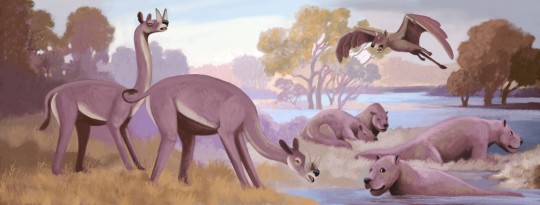
Barred from the mainland, the waters and islands hold a bright future for these majestic animals.

Cervochenia nuada (distinct from anterior species by slightly longer flag head) by foulserpent in display position, foaming like a camel ALSO MODIFIED FLAG-LIKE DISPLAY BENIS
The Paleocene saw a great diversity of lambdopsalids in their Asian homeland as in our world, except more as their placental competitors came crashing down. They seem to have largely replaced the local herbivorous djadochtatheroideans, ranging from small pika size and like burrowers to tall browsers and even hopping forms (as if mocking djadochtatheroideans further). One of their most distinguishing features in real-like was uniquely hypsodont molar teeth, suggesting that they were among the first local mammals to be specialised grazers; here, this is certainly apparent as they are among the first Cenozoic multituberculates to display adaptations for cursoriality in this timeline, marking them as well adapted for open biomes.
The PETM was especially harsh as it coincided with the collision with India, bringing gondwanathere competitors to Asia. Combined with the spread of rainforests, most of the earlier lambdopsalid radiation became extinct, with no species above 10 kg crossing the Paleocene/Eocene boundary. The small sized survivors, however, thrived and even colonised North America, spreading as small sized herbivores swiftly running across the forest floors and/or digging.
The Eocene saw the reduction of digits, with the forelimb coming to be supported on two toes while the hindlimb on a single one, an arrangement similar to some of our bandicoots particularly the Chaeropus genus. This seems to be a compromise between both increased cursoriality and retained digging habits much as in bandicoots, and like them it lead to the development of true hooves. In our bandicoots young are deposited in the pouch by placental stalks, thus removing the need for grasping forelimbs; conversely, juvenile monotremes (which as adults also have non-grasping, specialised forelimbs) actually move about very often in the mother’s pouch in search of mammary glands. Do lambdopsalids need a way around like bandicoots or don’t like monotremes? YOU DECIDE. Disregard that, multituberculates apparently gestated live young like placentals do there’s no need to overexplain the hooved forelimbs.
With the Grand Coupure, lambdopsalids moved into Europe, displacing several local small herbivores like ferugliotheriids and boffiids. With the spread of open grasslands they were allowed to attain large sizes once more, some Oligocene forms as large as an elk. In general there is some faunal provincialism, with lambdopsalids being more common in Eurasia and adalatheriids in North America, though both groups occurred across both landmasses.
Like all non-placental mammals multituberculates have bifurcated penises, and in lambdopsalids this lead to a truly unique evolutionary novelty. In derived species, one of the heads evolved into a flag-like organ and lost its urethra, while the other retained it and remained relatively small, just long enough to do its job. Thus, rather than horns and tusks the lambdopsalids probably developed the most direct sexual displays of any tetrapod.
As the world keeps cooling and drying and plains spread, lambdopsalids have bright horizons ahead. Soon, Afro-Arabia and Asia will collide, leading to interesting results…
#multituberculate earth#multituberculate#multituberculata#speculative zoology#speculative biology#spec evo#speculative evolution
5 notes
·
View notes
Text
CHAPTER XI THE SARGASSO SEA
That day the Nautilus crossed a singular part of the Atlantic Ocean. No one can be ignorant of the existence of a current of warm water known by the name of the Gulf Stream. After leaving the Gulf of Florida, we went in the direction of Spitzbergen. But before entering the Gulf of Mexico, about 45° of N. lat., this current divides into two arms, the principal one going towards the coast of Ireland and Norway, whilst the second bends to the south about the height of the Azores; then, touching the African shore, and describing a lengthened oval, returns to the Antilles. This second arm—it is rather a collar than an arm—surrounds with its circles of warm water that portion of the cold, quiet, immovable ocean called the Sargasso Sea, a perfect lake in the open Atlantic: it takes no less than three years for the great current to pass round it. Such was the region the Nautilus was now visiting, a perfect meadow, a close carpet of seaweed, fucus, and tropical berries, so thick and so compact that the stem of a vessel could hardly tear its way through it. And Captain Nemo, not wishing to entangle his screw in this herbaceous mass, kept some yards beneath the surface of the waves. The name Sargasso comes from the Spanish word “sargazzo” which signifies kelp. This kelp, or berry-plant, is the principal formation of this immense bank. And this is the reason why these plants unite in the peaceful basin of the Atlantic. The only explanation which can be given, he says, seems to me to result from the experience known to all the world. Place in a vase some fragments of cork or other floating body, and give to the water in the vase a circular movement, the scattered fragments will unite in a group in the centre of the liquid surface, that is to say, in the part least agitated. In the phenomenon we are considering, the Atlantic is the vase, the Gulf Stream the circular current, and the Sargasso Sea the central point at which the floating bodies unite.
I share Maury’s opinion, and I was able to study the phenomenon in the very midst, where vessels rarely penetrate. Above us floated products of all kinds, heaped up among these brownish plants; trunks of trees torn from the Andes or the Rocky Mountains, and floated by the Amazon or the Mississippi; numerous wrecks, remains of keels, or ships’ bottoms, side-planks stove in, and so weighted with shells and barnacles that they could not again rise to the surface. And time will one day justify Maury’s other opinion, that these substances thus accumulated for ages will become petrified by the action of the water and will then form inexhaustible coal-mines—a precious reserve prepared by far-seeing Nature for the moment when men shall have exhausted the mines of continents.
In the midst of this inextricable mass of plants and sea weed, I noticed some charming pink halcyons and actiniae, with their long tentacles trailing after them, and medusæ, green, red, and blue.
All the day of the 22nd of February we passed in the Sargasso Sea, where such fish as are partial to marine plants find abundant nourishment. The next, the ocean had returned to its accustomed aspect. From this time for nineteen days, from the 23rd of February to the 12th of March, the Nautilus kept in the middle of the Atlantic, carrying us at a constant speed of a hundred leagues in twenty-four hours. Captain Nemo evidently intended accomplishing his submarine programme, and I imagined that he intended, after doubling Cape Horn, to return to the Australian seas of the Pacific. Ned Land had cause for fear. In these large seas, void of islands, we could not attempt to leave the boat. Nor had we any means of opposing Captain Nemo’s will. Our only course was to submit; but what we could neither gain by force nor cunning, I liked to think might be obtained by persuasion. This voyage ended, would he not consent to restore our liberty, under an oath never to reveal his existence?—an oath of honour which we should have religiously kept. But we must consider that delicate question with the Captain. But was I free to claim this liberty? Had he not himself said from the beginning, in the firmest manner, that the secret of his life exacted from him our lasting imprisonment on board the Nautilus? And would not my four months’ silence appear to him a tacit acceptance of our situation? And would not a return to the subject result in raising suspicions which might be hurtful to our projects, if at some future time a favourable opportunity offered to return to them?
During the nineteen days mentioned above, no incident of any kind happened to signalise our voyage. I saw little of the Captain; he was at work. In the library I often found his books left open, especially those on natural history. My work on submarine depths, conned over by him, was covered with marginal notes, often contradicting my theories and systems; but the Captain contented himself with thus purging my work; it was very rare for him to discuss it with me. Sometimes I heard the melancholy tones of his organ; but only at night, in the midst of the deepest obscurity, when the Nautilus slept upon the deserted ocean. During this part of our voyage we sailed whole days on the surface of the waves. The sea seemed abandoned. A few sailing-vessels, on the road to India, were making for the Cape of Good Hope. One day we were followed by the boats of a whaler, who, no doubt, took us for some enormous whale of great price; but Captain Nemo did not wish the worthy fellows to lose their time and trouble, so ended the chase by plunging under the water. Our navigation continued until the 13th of March; that day the Nautilus was employed in taking soundings, which greatly interested me. We had then made about 13,000 leagues since our departure from the high seas of the Pacific. The bearings gave us 45° 37′ S. lat., and 37° 53′ W. long. It was the same water in which Captain Denham of the Herald sounded 7,000 fathoms without finding the bottom. There, too, Lieutenant Parker, of the American frigate Congress, could not touch the bottom with 15,140 fathoms. Captain Nemo intended seeking the bottom of the ocean by a diagonal sufficiently lengthened by means of lateral planes placed at an angle of 45° with the water-line of the Nautilus. Then the screw set to work at its maximum speed, its four blades beating the waves with in describable force. Under this powerful pressure, the hull of the Nautilus quivered like a sonorous chord and sank regularly under the water.
At 7,000 fathoms I saw some blackish tops rising from the midst of the waters; but these summits might belong to high mountains like the Himalayas or Mont Blanc, even higher; and the depth of the abyss remained incalculable. The Nautilus descended still lower, in spite of the great pressure. I felt the steel plates tremble at the fastenings of the bolts; its bars bent, its partitions groaned; the windows of the saloon seemed to curve under the pressure of the waters. And this firm structure would doubtless have yielded, if, as its Captain had said, it had not been capable of resistance like a solid block. We had attained a depth of 16,000 yards (four leagues), and the sides of the Nautilus then bore a pressure of 1,600 atmospheres, that is to say, 3,200 lbs. to each square two-fifths of an inch of its surface.
“What a situation to be in!” I exclaimed. “To overrun these deep regions where man has never trod! Look, Captain, look at these magnificent rocks, these uninhabited grottoes, these lowest receptacles of the globe, where life is no longer possible! What unknown sights are here! Why should we be unable to preserve a remembrance of them?”
“Would you like to carry away more than the remembrance?” said Captain Nemo.
“What do you mean by those words?”
“I mean to say that nothing is easier than to make a photographic view of this submarine region.”
I had not time to express my surprise at this new proposition, when, at Captain Nemo’s call, an objective was brought into the saloon. Through the widely-opened panel, the liquid mass was bright with electricity, which was distributed with such uniformity that not a shadow, not a gradation, was to be seen in our manufactured light. The Nautilus remained motionless, the force of its screw subdued by the inclination of its planes: the instrument was propped on the bottom of the oceanic site, and in a few seconds we had obtained a perfect negative.
But, the operation being over, Captain Nemo said, “Let us go up; we must not abuse our position, nor expose the Nautilus too long to such great pressure.”
“Go up again!” I exclaimed.
“Hold well on.”
I had not time to understand why the Captain cautioned me thus, when I was thrown forward on to the carpet. At a signal from the Captain, its screw was shipped, and its blades raised vertically; the Nautilus shot into the air like a balloon, rising with stunning rapidity, and cutting the mass of waters with a sonorous agitation. Nothing was visible; and in four minutes it had shot through the four leagues which separated it from the ocean, and, after emerging like a flying-fish, fell, making the waves rebound to an enormous height.
1 note
·
View note
Text
Tongues of the Moon, Philip Jose Farmer
Fireflies on the dark meadow of Earth....
The men and women looking up through the dome in the center of the crater of Eratosthenes were too stunned to cry out, and some did not understand all at once the meaning of those pin-points on the shadowy face of the new Earth, the lights blossoming outwards, then dying. So bright they could be seen through the cloudmasses covering a large part of Europe. So bright they could be located as London, Paris, Brussels, Copenhagen, Leningrad, Rome, Reykjavik, Athens, Cairo....
Then, a flare near Moscow that spread out and out and out....
Some in the dome recovered more quickly than others. Scone and Broward, two of the Soviet North American officers present at the reception in honor of the South Atlantic Axis officers, acted swiftly enough to defend themselves.
Even as the Axes took off their caps and pulled small automatics and flat bombs from clips within the caps, the two Americans reached for the guns in their holsters.
Too late to do them much good if the Argentineans and South Africans nearest them had aimed at them. The Axes had no shock on their faces; they must have known what to expect. And their weapons were firing before the fastest of the Soviets could reach for the butts of their guns.
But the Axes must have had orders to kill the highest ranking Soviets first. At these the first fire was concentrated.
Marshal Kosselevsky had half-turned to his guest, Marshal Ramírez-Armstrong. His mouth was open and working, but no words came from it. Then, his eyes opened even wider as he saw the stubby gun in the Argentinean's hand. His own hand rose in a defensive, wholly futile, gesture.
Ramírez-Armstrong's gun twanged three times. Other Axes' bullets also struck the Russian. Kosselevsky clutched at his paunch, and he fell face forward. The .22 calibers did not have much energy or penetrate deeply into the flesh. But they exploded on impact; they did their work well enough.
Scone and Broward took advantage of not being immediate targets. Guns in hand, they dived for the protection of a man-tall bank of instruments. Bullets struck the metal cases and exploded, for, in a few seconds, the Axes had accomplished their primary mission and were now out to complete their secondary.
Broward felt a sting on his cheek as he rolled behind the bank. He put his hand on his cheek, and, when he took it away, he saw his hand covered with blood. But his probing finger felt only a shallow of flesh. He forgot about the wound. Even if it had been more serious, he would have had no time to take care of it.
A South African stepped around the corner of the bank, firing as he came.
Broward shot twice with his .45. The dark-brown face showered into red and lost its human shape. The body to which it was now loosely attached curved backwards and fell on the floor.
"Broward!" called Scone above the twang and boom of the guns and the wharoop! of a bomb. "Can you see anything? I can't even stick my head around the corner without being shot at."
Broward looked at Scone, who was crouched at the other end of the bank. Scone's back was to Broward, but Scone's head was twisted far enough for him to see Broward out of the corner of his eye.
Even at that moment, when Broward's thoughts should have excluded everything but the fight, he could not help comparing Scone's profile to a face cut out of rock. The high bulbous forehead, thick bars of bone over the eyes, Dantesque nose, thin lips, and chin jutting out like a shelf of granite, more like a natural formation which happened to resemble a chin than anything which had taken shape in a human womb.
Ugly, massive, but strong. Nothing of panic or fear in that face; it was as steady as his voice.
Old Gibraltar-face, thought Broward for perhaps the hundredth time. But this time he did not feel dislike.
"I can't see any more than you—Colonel," he said.
Scone, still squatting, shifted around until he could bring one eye to bear fully on Broward. It was a pale blue, so pale it looked empty, unhuman.
"Colonel?"
"Now," said Broward. "A bomb got General Mansfield and Colonels Omato and Ingrass. That gives you a fast promotion, sir."
"We'll both be promoted above this bank if an Axe lobs a bomb over," said Scone. "We have to get out of here."
"To where?"
Scone frowned—granite wrinkling—and said, "It's obvious the Axes want to do more than murder a few Soviets. They must plan on getting control of the bonephones. I know I would if I were they. If they can capture the control center, every Soviet on the Moon—except for the Chinese—is at their mercy. So...."
"We make a run for the BR?"
"I'm not ordering you to come with me," said Scone. "That's almost suicide. But you will give me a covering fire."
"I'll go with you, Colonel."
Scone glanced at the caduceuses on Broward's lapels, and he said, "We'll need your professional help after we clean out the Axes. No."
"You need my amateurish help now," said Broward. "As you see"—he jerked his thumb at the nearly headless Zulu—"I can handle a gun. And if we don't get to the bonephone controls first, life won't be worth living. Besides, I don't think the Axes intend taking any prisoners."
"You're right," said Scone. But he seemed hesitant.
"You're wondering why I'm falling in so quickly with your plan to wreck the control center?" said Broward. "You think I'm a Russky agent?"
"I didn't say I intended to wreck the transmitters," said Scone. "No. I know what you are. Or, I think I do. You're not a Russky. You're a...."
Scone stopped. Like Broward, he felt the rock floor quiver, then start shaking. And a low rumbling reached them, coming up through their feet before their ears detected it.
Scone, instead of throwing himself flat on the floor—an instinctive but useless maneuver—jumped up from his squatting position.
"Now! Now! The others'll be too scared to move!"
1 note
·
View note
Text
Discovering Tranquility at Moholoholo Mountain View Chalets
Escape the hustle and bustle of everyday life and immerse yourself in the serene beauty of Moholoholo Mountain View Chalets. Tucked away in the picturesque landscapes of South Africa, these chalets offer a gateway to a world where the only soundtrack is the gentle rustle of leaves and the distant call of birds. Let's embark on a journey to uncover the essence of mountain view tranquility at Moholoholo.
Exploring Moholoholo Mountain View
Reveling in Nature's Majesty
As you approach Moholoholo, the grandeur of the surrounding peaks, adorned with verdant foliage, captivates your senses. The air is crisp, and the scenery is nothing short of breathtaking. This is where mountain view dreams come to life, where every moment is a testament to the awe-inspiring beauty of nature.
Mountain View Chalets: A Sanctuary of Comfort
Step into the world of Moholoholo Mountain View Chalets, where luxury meets wilderness. Perched strategically to offer panoramic views of the mountains, these chalets redefine the meaning of relaxation. Picture yourself unwinding on your private balcony, with nothing but the expansive mountain view stretching out before you.
Immersing in Nature's Embrace
Trails and Treks
For the adventurous souls, Moholoholo beckons with a network of trails and treks waiting to be explored. Whether you're a seasoned hiker or a novice adventurer, there's a path to suit every preference. Traverse through dense forests, encounter cascading waterfalls, and breathe in the pure mountain air as you embark on an unforgettable journey through the wilderness.
Wildlife Encounters
One of the highlights of Moholoholo is its rich biodiversity. Join a guided safari and witness the wonders of the African wilderness up close. From graceful antelopes grazing in the meadows to the elusive predators prowling through the underbrush, every moment spent amidst the wildlife is a reminder of the marvels of nature.
Indulging in Relaxation
Retreat to Comfort
After a day of exploration, retreat to the comfort of your Mountain View Chalet. Sink into plush furnishings, sip on a glass of wine, and let the tranquility of your surroundings wash over you. Whether you choose to stargaze from your balcony or cozy up by the fireplace, each moment is a testament to the art of relaxation.
In a world filled with chaos, Moholoholo Mountain View Chalets offer a sanctuary of serenity. Here, amidst the majestic peaks and untouched wilderness, you'll find solace for your soul and inspiration for your spirit. Whether you seek adventure, relaxation, or simply a moment of peace, Moholoholo welcomes you to experience the magic of mountain view bliss in its purest form.
0 notes
Text
Discover the Enchanting Beauty of Africa: A Journey into the Wild
Africa, a vast and diverse continent, captivates travelers with its breathtaking landscapes, rich cultural heritage, and extraordinary wildlife. From the iconic savannahs of East Africa to the ancient wonders of North Africa, and the vibrant cultures of West Africa to the untamed wilderness of Southern Africa, Africa offers an unparalleled travel experience. In this comprehensive guide, we delve into the diverse facets of Africa, highlighting its remarkable destinations, cultural treasures, wildlife encounters, and practical travel tips. Join us on this journey of discovery beautiful places to visit through the enchanting lands of Africa.
1: Discovering Africa's Landscapes
1.1 The Serengeti: https://www.serengeti.com/
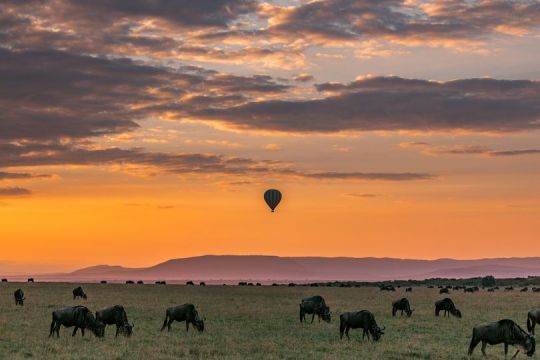
A Safari Haven in East Africa The Serengeti National Park in Tanzania is a wildlife enthusiast's paradise. Spanning over 14,000 square kilometers, it is home to the iconic Great Wildebeest Migration, where millions of wildebeest, zebras, and other herbivores cross the vast plains in search of greener pastures. Visitors can witness this awe-inspiring spectacle and observe the predators, such as lions, cheetahs, and hyenas, in their natural habitat.
1.2 Majestic Mount Kilimanjaro:https://www.kilimanjaroparktanzania.com/

Conquering Africa's Rooftop Mount Kilimanjaro, standing tall at 5,895 meters, is the highest peak in Africa. Embarking on a trek to its summit is a bucket-list adventure for many travelers. The journey takes you through diverse ecosystems, from lush rainforests to alpine meadows, culminating in a challenging climb to the snowy summit. The breathtaking views from the top make every step worthwhile.
1.3 The Okavango Delta:https://www.okavangodelta.com/
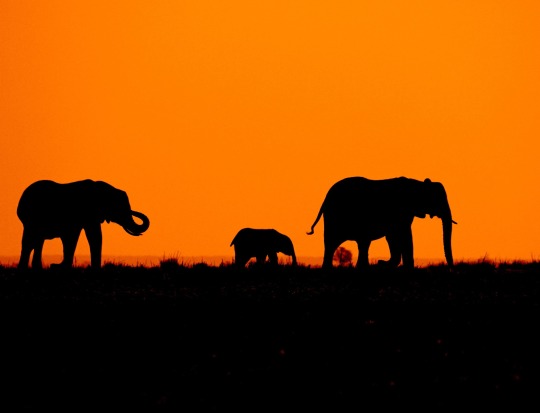
A Natural Oasis in Botswana The Okavango Delta, located in Botswana, is a unique and vibrant ecosystem. This vast inland delta is formed by the Okavango River, attracting a myriad of wildlife. Explore the delta by traditional mokoro (dugout canoe) and glide through the winding channels surrounded by reeds and water lilies. Encounters with elephants, hippos, and a variety of bird species create unforgettable moments.
1.4 The Sahara Desert:https://www.britannica.com/place/Sahara-desert-Africa

Exploring North Africa's Endless Sands The Sahara Desert, spanning across several African countries, is the world's largest hot desert. It offers a mesmerizing landscape of towering dunes, vast plains, and ancient caravan routes. Experience the desert's magic by embarking on a camel trek, camping under the starry sky, and witnessing the ever-shifting sands that create a surreal atmosphere.
1.5 The Drakensberg Mountains:https://www.britannica.com/place/Drakensberg
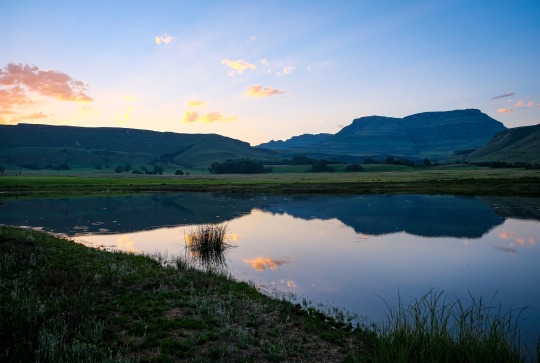
South Africa's Alpine Splendor The Drakensberg Mountains in South Africa are a haven for outdoor enthusiasts and nature lovers. With its jagged peaks, lush valleys, and cascading waterfalls, this mountain range offers breathtaking hikes and scenic vistas. Explore the uKhahlamba-Drakensberg Park, a UNESCO World Heritage Site, and discover its rich biodiversity, rock art, and dramatic landscapes.
2: Unveiling Africa's Cultural Heritage
2.1 Ancient Egypt: https://www.britannica.com/place/ancient-Egypt

Exploring the Pyramids and Temples Ancient Egypt, with its fascinating history, is a treasure trove of archaeological wonders. Visit the Great Pyramids of Giza, the Sphinx, and the temples of Luxor and Karnak to unravel the secrets of the pharaohs. Marvel at the intricate hieroglyphics, explore the ancient tombs in the Valley of the Kings, and cruise along the Nile River to immerse yourself in Egypt's captivating past.
2.2 Marrakech:https://www.visitmorocco.com/en/travel/marrakesh

A Glimpse into Moroccan Traditions Marrakech, the vibrant city in Morocco, offers a sensory journey into the country's rich cultural heritage. Lose yourself in the maze-like streets of the medina, where bustling souks offer a kaleidoscope of colors, scents, and sounds. Explore architectural marvels like the Koutoubia Mosque and the Bahia Palace, and indulge in the flavors of Moroccan cuisine, such as tagine and mint tea.
2.3 Timbuktu:https://www.britannica.com/place/Timbuktu-Mali
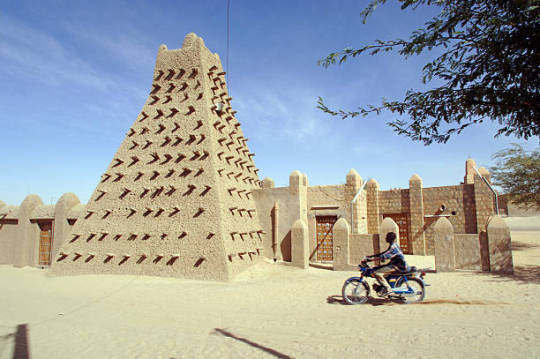
Tracing the History of the Sahara Timbuktu, located in Mali, holds a legendary status as an ancient center of trade and learning. It was a key hub along the trans-Saharan caravan routes and played a pivotal role in the exchange of goods, knowledge, and culture. Visit the historic mosques and libraries, witness the impressive mud-brick architecture, and gain insights into the intellectual legacy that shaped this remote desert city.
2.4 Lalibela:https://whc.unesco.org/en/list/18/
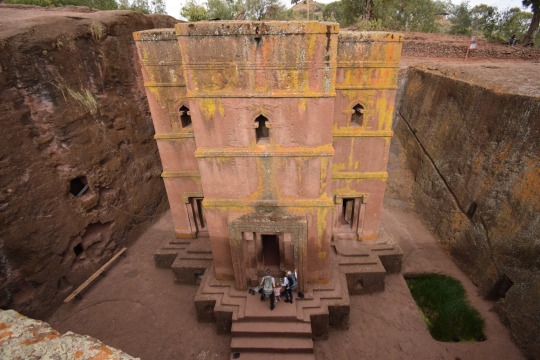
Ethiopia's Rock-Hewn Churches Lalibela, nestled in the Ethiopian highlands, is renowned for its awe-inspiring rock-hewn churches. Carved out of solid rock, these monolithic structures are a testament to the architectural brilliance of the past. Explore the interconnected churches, each with its unique design and religious significance, and immerse yourself in the spiritual atmosphere of this UNESCO World Heritage Site.
2.5 Cape Coast:https://www.britannica.com/place/Cape-Coast

A Journey into Ghana's Slave Trade History Cape Coast, located on the coast of Ghana, holds poignant reminders of the transatlantic slave trade. Visit the Cape Coast Castle and Elmina Castle, where countless Africans were held captive before being shipped off to the Americas. Gain a deeper understanding of this dark period of history, pay tribute to the resilience of the people, and engage in cultural exchanges with the local communities.
https://youtu.be/cLbR5DE-kwI
3: Wildlife Encounters in Africa
3.1 The Maasai Mara:https://www.maasaimara.com/
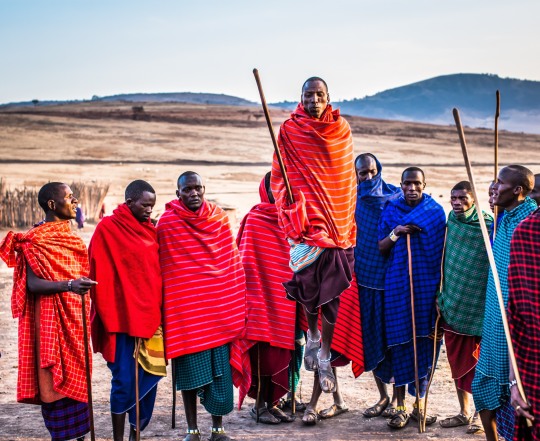
Witnessing the Great Wildebeest Migration The Maasai Mara Reserve in Kenya is synonymous with the Great Wildebeest Migration. Experience the sheer spectacle of millions of wildebeest, zebras, and gazelles crossing crocodile-infested rivers and traversing the plains in search of fresh grazing grounds. Witness thrilling predator-prey interactions and capture incredible wildlife moments in one of Africa's most iconic safari destinations.
3.2 The Kruger National Park: https://www.krugerpark.co.za/
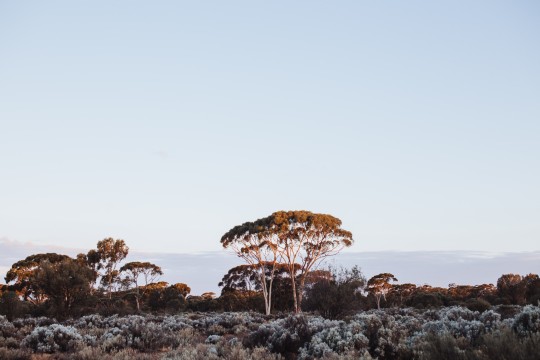
South Africa's Iconic Safari Destination The Kruger National Park in South Africa offers an unrivaled safari experience, boasting an incredible diversity of wildlife. Embark on game drives or guided walking safaris to encounter the Big Five (elephant, lion, rhino, leopard, and buffalo), along with a plethora of other species. Stay in luxurious lodges or camp under the stars, immersing yourself in the untamed beauty of the African bush.
3.3 Bwindi Impenetrable Forest: https://www.bwindiforestnationalpark.com/

Gorilla Trekking in Uganda Bwindi Impenetrable Forest in Uganda is a sanctuary for endangered mountain gorillas. Embark on a once-in-a-lifetime trek through dense foliage to encounter these majestic creatures in their natural habitat. Observe their behaviors, marvel at their intelligence, and contribute to their conservation efforts in an experience that will leave an indelible mark on your soul.
3.4 Etosha National Park:https://www.etoshanationalpark.org/

Namibia's Wildlife Wonderland Etosha National Park in Namibia is a unique safari destination known for its vast salt pans and abundant wildlife. Explore the park's diverse habitats, including the Etosha Pan, waterholes, and grassy plains, which attract a plethora of animals, including elephants, lions, giraffes, and endangered black rhinos. Capture stunning photographs against the backdrop of the stark and surreal landscapes, creating lasting memories of Namibia's wildlife wonderland.
3.5 The Okavango Delta: https://whc.unesco.org/en/list/1432/
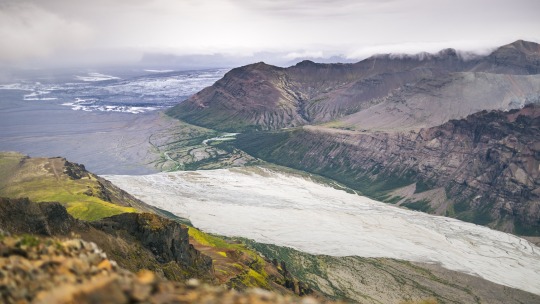
Exploring Botswana's Water Safari The Okavango Delta in Botswana is a mesmerizing oasis that supports a remarkable array of wildlife. Embark on a water safari through the winding channels and lagoons, surrounded by lush vegetation and diverse animal species. Glide silently in a mokoro, spotting elephants bathing, hippos wallowing, and colorful birdlife gracing the reeds. Immerse yourself in the tranquility of this pristine wilderness.
4: African Adventures and Activities
4.1 Victoria Falls:https://www.zambiatourism.com/destinations/waterfalls/victoria-falls/

A Thrilling Encounter with the Mighty Zambezi Victoria Falls, located on the border of Zambia and Zimbabwe, is one of Africa's greatest natural wonders. Witness the sheer power and beauty of the mighty Zambezi River as it plunges into a thundering cascade. Engage in exhilarating activities like white-water rafting, bungee jumping, or taking a scenic helicopter flight over the falls, immersing yourself in the awe-inspiring surroundings.
4.2 Sahara Desert Trekking:https://wildmorocco.com/trekking-morocco/sahara-desert-trekking/

Exploring the Dunes on Camelback Embark on an unforgettable adventure through the Sahara Desert, the epitome of exotic landscapes. Trek across the golden dunes on camelback, camping under a blanket of stars, and experiencing the solitude and grandeur of this vast desert. Engage with local nomadic communities, savor traditional cuisine, and witness mesmerizing sunrises and sunsets over the shifting sands.
4.3 Zanzibar:https://www.tripadvisor.com/Tourism-g482884-Zanzibar_Island_Zanzibar_Archipelago-Vacations.html

A Tropical Paradise with Pristine Beaches Escape to the idyllic island of Zanzibar, off the coast of Tanzania, for a dose of tropical bliss. Immerse yourself in the crystal-clear waters, pristine beaches, and vibrant coral reefs. Discover the historic Stone Town, a UNESCO World Heritage Site, with its winding alleys, spice markets, and ornate architecture. Indulge in water sports, snorkeling, or simply unwind in the laid-back island atmosphere.
4.4 Table Mountain: https://tablemountain.net/
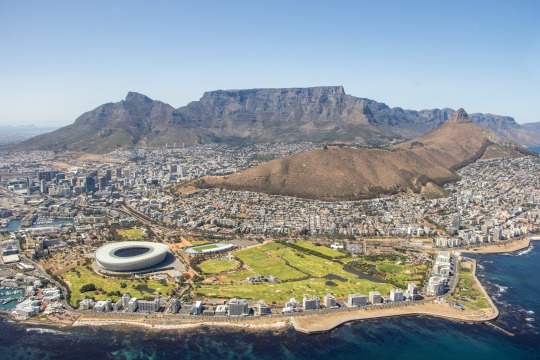
Conquering Cape Town's Iconic Landmark No visit to Cape Town, South Africa, is complete without ascending Table Mountain. Take a cable car or embark on a rewarding hike to the summit, where panoramic views of the city, coastline, and surrounding landscapes await. Explore the mountain's unique flora and fauna, and revel in the sense of accomplishment as you stand atop one of Africa's most iconic landmarks.
4.5 Nile River Cruise: https://nilecruisers.com/
Read the full article
#africa#africalist#africatop10#africatourism#africatourism2021#africatravel#africatravelguide#africavlog#africancountries#bestafricancountries#bestcountriesinafrica#bestcountriesinafricatovisit#bestcountriesvisitafrica2021#bestplacestovisitinafrica#bestplacestovisitinsouthafrica#besttouristattractionsinafrica#southafrica#southafricatourism#southafricantourism#thingstodoinsouthafrica#top10africa#top10africancountries#top10africancountriestovisit#top10bestcountriesinafrica#top10touristattractionsinafrica#tourism#tourisminafrica#tourismineastafrica#visitafrica#visitafrica2023
0 notes
Text
7 Flower Traditions Around the World
As flowers have been cultivated for a long time now, cultural traditions and their meanings are closely entwined. Floral arrangements have different connotations all over the world, from the arid African plains to the lush Asian meadows. Join us today as we travel to seven diverse regions of the world to explore a variety of flower-related traditions!
Flower Traditions
There are a number of customs associated with giving flowers, and each country has its own understanding of each flower’s meaning under particular circumstances. Thus, proceed with caution when deciding to send a floral arrangement while travelling abroad: with an incorrect arrangement, you may easily get in an embarrassing situation.
Flower Symbolism
The most common flowers are the same in most countries, so roses, peonies and orchids are the best options to please any recipient. Orchids are known to represent beauty and allure around the world and would make a great gift in almost any part of the world. To make sure orchids reach the recipient in perfect condition, it is recommended to order their delivery (rather than transporting the flowers yourself). London, with its high quality flower delivery services like Flowwow, is the perfect place to send orchids as a gift.

In South Africa, Flowers are a Must for Christmas
This December festivity, which is normally associated with cold weather, is observed differently in South Africa's dry plains because of the intense heat. Christmas is a crucial time for flowers since they are given as presents and used as colourful decorations. Home decorations in South-African neighbourhoods often include delicate hydrangeas, which bloom at this time of year.
In Mexico, Celebrate Life with Marigolds
The sun-like marigolds, an essential element of the Day of the Dead (Dia de Los Muertos), are a staple for the celebration of this vibrant Mexican holiday that contrasts life and death in a joyful way. Don't be shocked when you see the streets of Mexico covered in countless amounts of these flowers since, as is the custom, the vibrant colours and delicious fragrance guide the spirits to their homes.
In Brazil, Flowers are a ‘Woman Thing’
Brazil is the only country in the world where flowers are always a wonderful present. Brazil is also known for countless festivals and carnivals held there. When visiting a family's home, it is good manners to bring a bouquet of gerberas for the lady of the house to show your appreciation for her hospitality. This overpowering love is reflected in everyday customs in Brazil. Naturally, floral arrangements are frequently given to women on special occasions and holidays. The more colour, the better!
In Russia, count your roses
A bouquet of ten roses is typically considered to mean ‘Be mine’ in most countries. In Russia, however, it would suggest something very different because bouquets with an even number of flowers mean sympathy for a grieving family. Therefore, always pick an odd number of stems when purchasing a bouquet as a surprise or holiday gift.
In Asia, Avoid Pot Plants
Asia is notorious for having cultures where people do not view potted plants as appropriate gifts. Although many cultures would disagree, when in Rome, do as the Romans do and stop thinking of potted flowers as the perfect housewarming gift. Use modest bouquets of flowers in baskets or boxes as an alternative.
In China, Look for the Lucky Bamboo.
A revered emblem of luck, wealth, and financial security, the bamboo is adored by the Chinese people. The Lucky bamboo is perhaps everyone’s favourite: it makes a standalone present or can be given in combination with charms and ribbons to increase its symbolic meaning. It is even possible to embellish the lucky bamboo with peanuts, which traditionally stand for ongoing growth and a long, healthy life.
In Japan, remember the day of the cherry blossom.
In Japan, the sakura, or cherry blossom, is the star of springtime. The spring mood finally starts to take hold when the trees bloom with delicate rose-coloured flowers. Sending flowers to your loved ones and taking advantage of the nice weather are especially appropriate at this time of year. Consult Hanakotoba, a special flower language preferred by the Japanese, for better understanding of the significance of various sakura species.
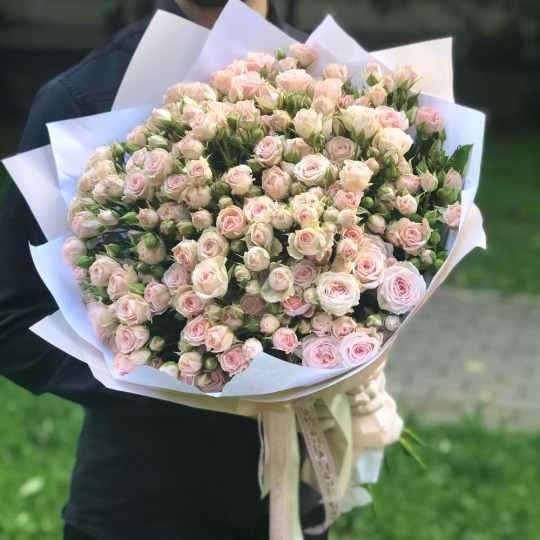
FAQ:
What are the busiest holidays for flower shops?
Mother's Day, Easter, and Valentine's Day are the busiest holidays for flower retailers. We recommend purchasing flowers in advance to avoid the holiday rush.
What do flowers symbolise in different cultures?
Many cultures have adopted the idea of a ‘language of flowers’, yet the significance of various flowers varies greatly. In Japan, gravestones are decorated with florist's daisies (Chrysanthemums), which are typically associated with friendship and happiness in the West. In Korea, 20-year-olds frequently receive a bouquet of 20 roses for their birthday. Roses are inherently connected to romance in most cultures. Sending white flowers should be done with caution because, in Asian culture, they are considered unsuitable gifts for the living because they are related to the spiritual world.
Where did the tradition of giving flowers begin?
Since ancient times, people have expressed their love and admiration with flowers. The legend has it that the custom of offering flowers originated in ancient Greece. Flowers were the perfect sacrifice for goddesses in Greek culture. Eventually, flowers were given to ladies as gifts to convey the intensity of the bonding experience.
Is there a national flower day?
True, most nations celebrate flowers on a national holiday. March 21st is a national holiday in the UK, where people celebrate the beginning of spring.
What are the floral trends of 2023?
Floral trends for 2023 incorporate organic and natural components, vivid colours, and minimalism.
1 note
·
View note
Photo

Margaret Taylor-Burroughs (November 1, 1915 – November 21, 2010), was a visual artist, writer, poet, educator, and arts organizer. She co-founded the Ebony Museum of Chicago, now the DuSable Museum of African American History. An active member of the African-American community, she also helped to establish the South Side Community Art Center, whose opening on May 1, 1941, was dedicated by FLOTUS Eleanor Roosevelt. There at the age of 23, she served as the youngest member of its board of directors. A long-time educator, she spent most of her career at DuSable High School. She was a prolific writer, with her efforts directed toward the exploration of the African American experience and to children, especially to their appreciation of their cultural identity and to their introduction and growing awareness of art. She is credited with the founding of Chicago's Lake Meadows Art Fair in the early 1950s. She earned BA and MA in Art Education from the School of the Art Institute of Chicago. She taught at DuSable High School on Chicago's Southside from 1946 to 1969, and from 1969 to 1979 was a professor of humanities at Kennedy-King College, a community college in Chicago. She taught African American Art and Culture at Elmhurst College in 1968. She was named Chicago Park District Commissioner by Harold Washington in 1985, a position she held until 2010. #africanhistory365 #africanexcellence https://www.instagram.com/p/CkahvZfOQJb/?igshid=NGJjMDIxMWI=
0 notes
Text
Rescue birds near richmond va

He currently has 13+ bird feeders in his yard and also raises and races homing pigeons. Living in the suburbs he does his best to bring wild birds into his backyard. Robert has been an avid birdwatcher pretty much his entire life. area: Maryville, Tennessee category: Birds, Indian Ringnecks listing updated: 2 days ago Green cheek conures - 350. For Sale and Delivered to you by USPS 6 young white birds $249.00 Colored Birds also available at the same price. game chickens - $15 (Lenox) I got some game hens and stags that I pulled off the yard and am looking to sellI will do some pretty good prices on them I have 1 spangled penny hatch hen $403 black roundhead hens $40 each 4 grey hens $40 each And about 20-25 3 month old stags that are hatch/grey/roundhead crosses $15 each I would be interested in.Free Classifieds Puppies for Sale in TN Tennessee, Dogs for Adoption in TN Tennessee, Cats, Birds, Small Pets. Two young roosters, I believe they are Buff Orpingtons. URGENT: This animal could be euthanized if not adopted soon. Moore's Little Britts Whitwell - Tennessee.Adopt Pet Birds in Tennessee. Hunting Dog Breeds Raised: German Shorthaired Pointer. Hunting Dog Breeds Raised: American Brittany, English Pointer, Epagneul Breton, French Brittany Spaniel, Labrador Retriever. Sexing: African Grey Parrots are difficult to visually sex.Wolf River Kennels Williston - Tennessee. Lifespan: African grey parrots may live for 40 - 60 years in captivity, although their mean lifespan in the wild appears to be somewhat shorter at about 23 years. Poultry Show Dates Size: 13 inches, adults weigh between 418 to 526 grams. Quail birds - baby 1 week olds, 4+ weeks and Adults, 100% organic quail eggs. Swap Meet or Auction: Date: Auction Schedule: Flock Swap JanuFlock Swap FebruFlock Swap. These birds… View Details $175 Fresh Baby Redeye Latinos in NashvilleTennessee Poultry Swaps and Livestock Auctions. There are a few different shades of blue, teal and green. So,small!More Lovebirds in Nashville Price / Cut South Nashville, TN (58 mi) Species Peach Faced Lovebird Age Young Ad Type For Sale Gender Mixed Dutch Blue Lovebirds Price cut $25. The male is charting 8 pounds grown, the female is charting 6 pounds. Both are liver/chocolate and white parti's. I have 2 ADORABLE Imperial CKC Shih Tzu puppies for sale, in East Tennessee! The male is $1,500, female is $1,800. Enjoy the Great Outdoors! You can contact Meadow Brook Game Farm by calling Richard Denning at 61 for reservations or 61 to reach his cell and for information. You will only pay for the birds you shoot. X2 He will get you in position to get a good shot if you follow these instructions we will guarantee the hunt.

0 notes
Text
Camera Safaris
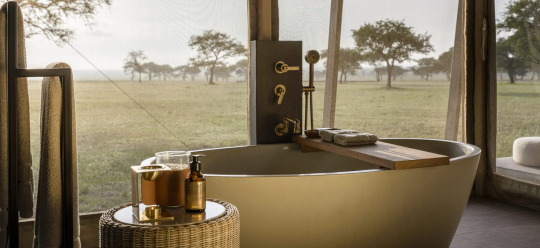
Luxury African Safari
Luxury Safaris
Planning a luxury Africa safari starts along with determining the kind of encounter you'd like to have. Cameras has numerous points of interest that discussing him or her with your travel real estate agent might require some time. Tricep / bicep yourself with certain basic knowledge about the region or countries you want to visit. Travel direct books would can be found in very handy any time planning a safari practical experience you'd never forget. High-class South African trips differ from other types concerning destination and amenities. The amount you're ready to spend on it is important. You have to come up with a budget irrespective of whether you're going for a comfort tour or a more cost-effective one. Luxury Photography equipment excursions of course, offers you comfortable and okay accommodations. You should also count on first rate food, offerings, amenities and businesses. One other advantage of extravagance African safaris will be your accommodations will most likely get closer to camp. This you more time have fun in Africa. Your travel and leisure planner should help you to witness The Significant 5 because it belongs to the highlights of a high-class African excursions. Several safaris blend an extra safari with a lot of budget options to manipulate the cost. Your Cameras hosting tour help will be an important an important part of your trip; pick carefully.
Luxury African Safari
Budget Camera Safaris
Contrary to everything that some people believe, funds African tours might be a rewarding experience. Roughing it up with the bush is not this bad idea if you would like experience Africa since it is. You won't hold the fine accommodations of an luxury Photo firefox but you'll to check out what matters the majority of and that is Africa's fauna. Budget safaris can be mostly participation excursions which include setting up your tent, helping released in the cooking and additionally traveling through The african continent by land. While using the economy still around recuperation, traveling on the budget is a realistic way to quench ones own thirst for voyage. You can choose smallish group tours which unfortunately only accommodates five people. Standard playground lodges, tented camps and chalets could be the usual accommodations. It is possible to upgrade your hiking trips, which fuses camping and settle style accommodations. Customized guided groups tend to be best for significant groups (8-10) while offering flexibility in terms of itinerary and budget. Transfer is by get, usually with a veteran guide who as well serves as lead and cook.
Deciding on your safari choice
Planning for an Africa safari includes pinpointing the best place to spend that. South African tour dates are synonymous by using Kruger National Recreation area and rightly therefore because it does not fail in both firefox experience and resorts. Kruger is the earth's biggest international creatures park and provides the Big 5 and more than 15, 000 elephants. Southern area Africa is also politically stable. Tanzania provides safari destinations together with the Serengeti, your Ngorongoro Crater Country wide Parks. Kenya comes with a classic safari working experience especially when you find the wildebeest migration. Some areas of Botswana have the most attention of wildlife inside Africa. Visiting a Chobe National Meadow is a worthwhile knowledge. Namibia boasts with the tallest elephants which might be found in Africa. Etosha National Park boasts the black rhino which is considered vulnerable and various other mammals. With 54 lands within its limits, Africa is a wide continent to discover. These 54 international locations all have their own cultures and lifestyle that can prove informative, educational and delightful as well. There are many different ways to explore Africa. Irrespective of whether you are going for classic safari packages and also ones that tackle a specific interest like birding safaris, Photography equipment hunting safaris, migration safaris or Cameras lion safaris, it is far better discuss your designs with your travel adviser. African safaris that will be well planned will give you the adventure which safaris are usually linked to, whether you're with limited funds or able to waste money a bit.
1 note
·
View note